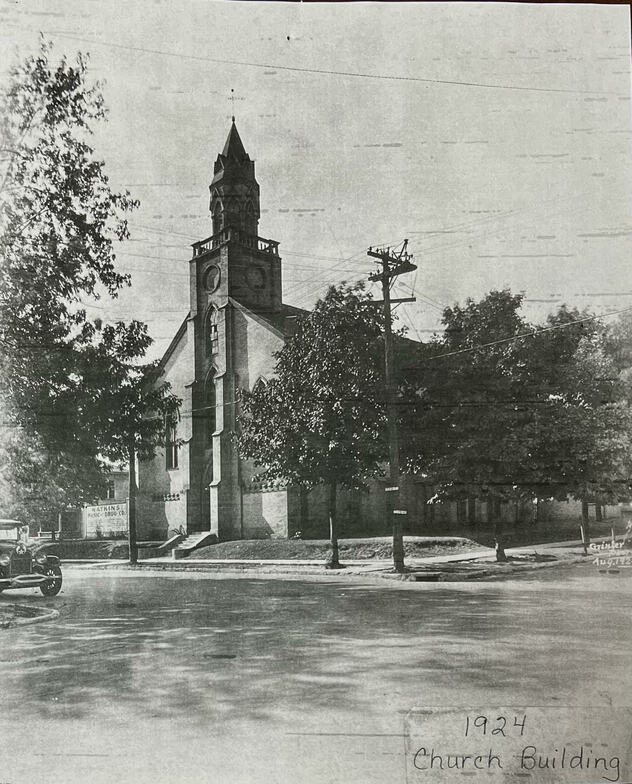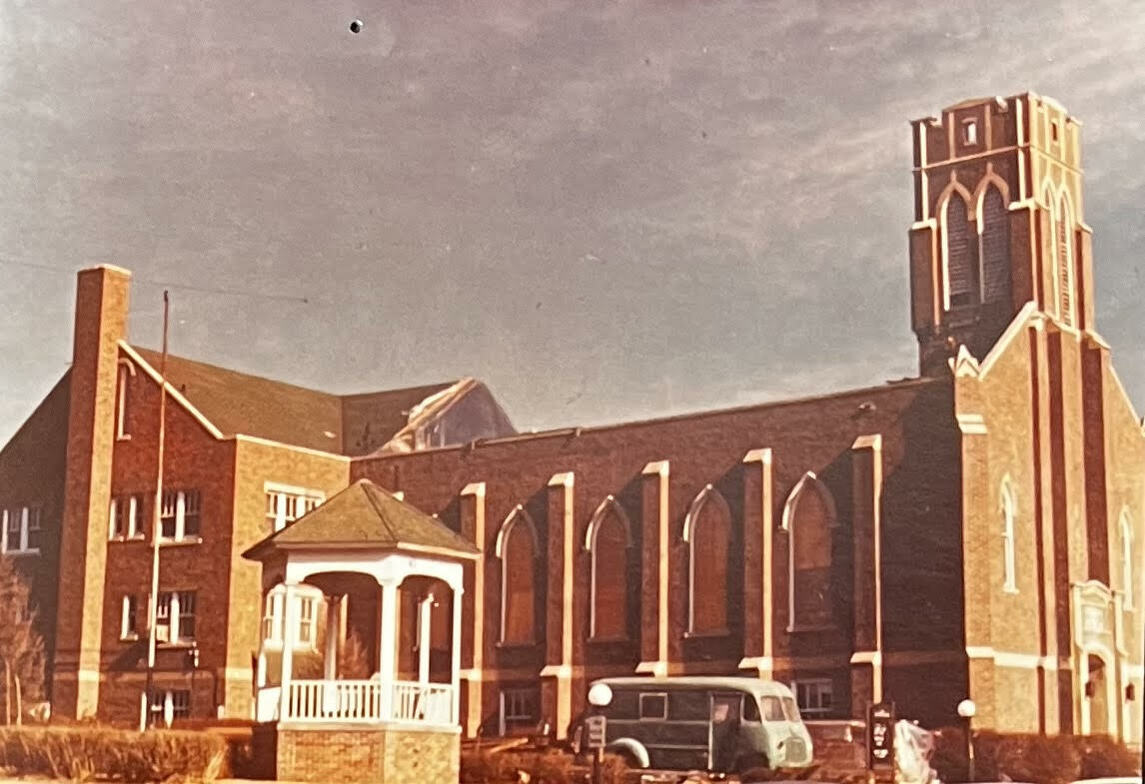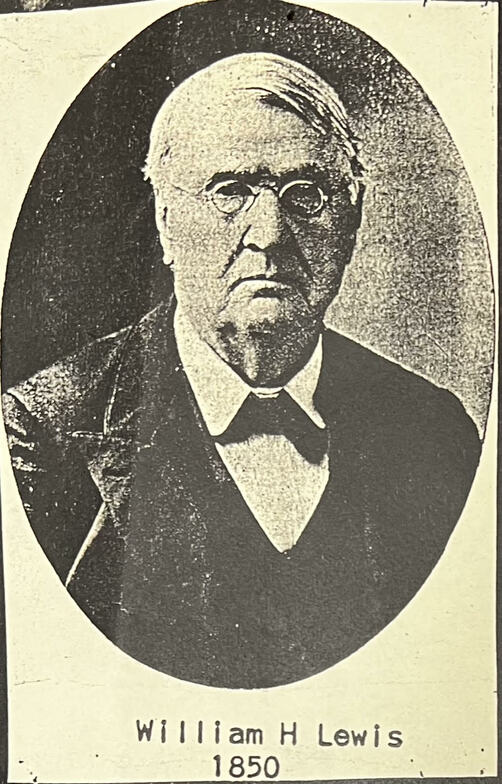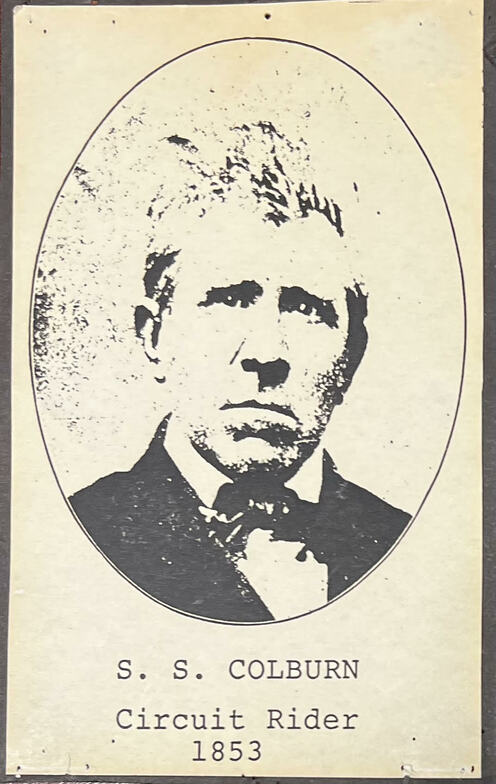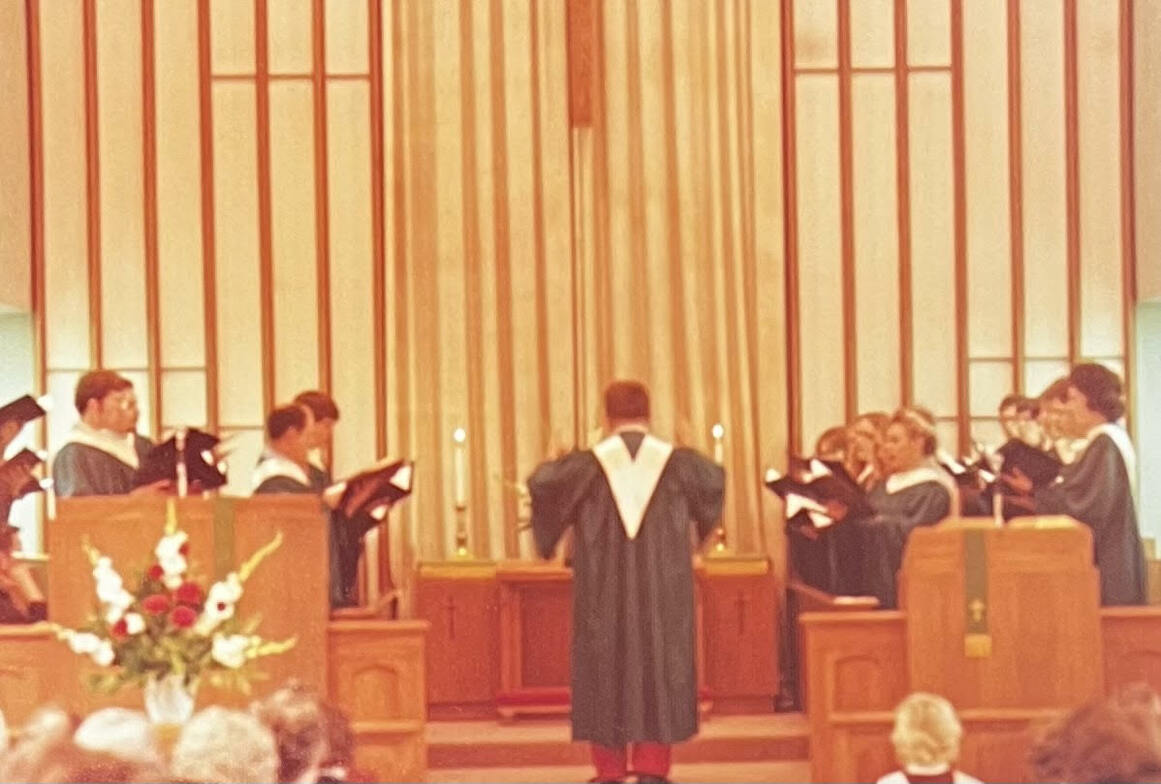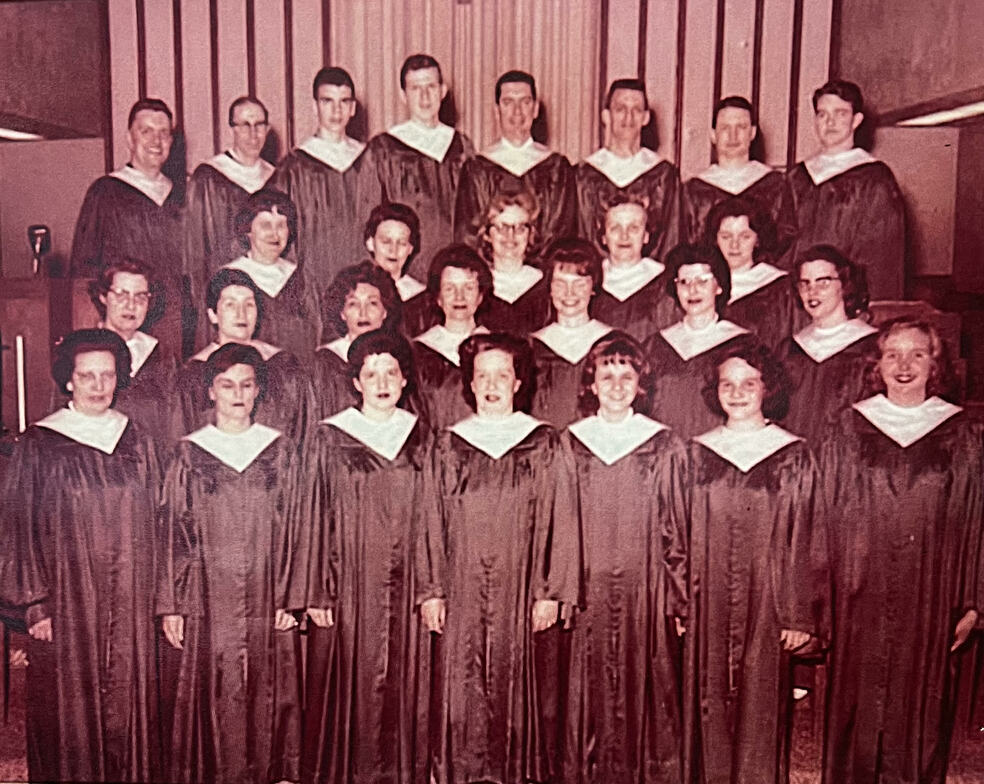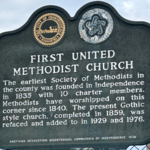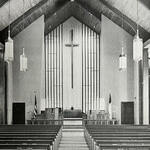For nearly two centuries, Independence United Methodist Church has been a beacon of faith, hope, and community in the heart of Independence, Missouri. Established in 1834, our church holds the distinction of being the first Methodist congregation in the area, deeply rooted in the rich traditions and history of our city. From our humble beginnings in a small log cabin, we have grown and evolved, reflecting the spirit and resilience of our members. Throughout the years, we have witnessed the town’s transformation and played a vital role in the community’s development, standing as a steadfast pillar of support and guidance.
As the population of Independence increased, the congregation of the church grew. In 1852, a parsonage was built just north of the church, and in 1857 a new church building was begun on the site of the old. It was of Gothic architecture, with beautiful stained glass windows, and had a tall spire which held a sweet deep-toned bell which could be heard for miles and was dubbed the finest Protestant church west of the Mississippi River. The congregation did not enjoy their beautiful new church very long before the War between the States began, and for a time the church was taken over by the Federal military authorities and used by Union military chaplains and as a hospital
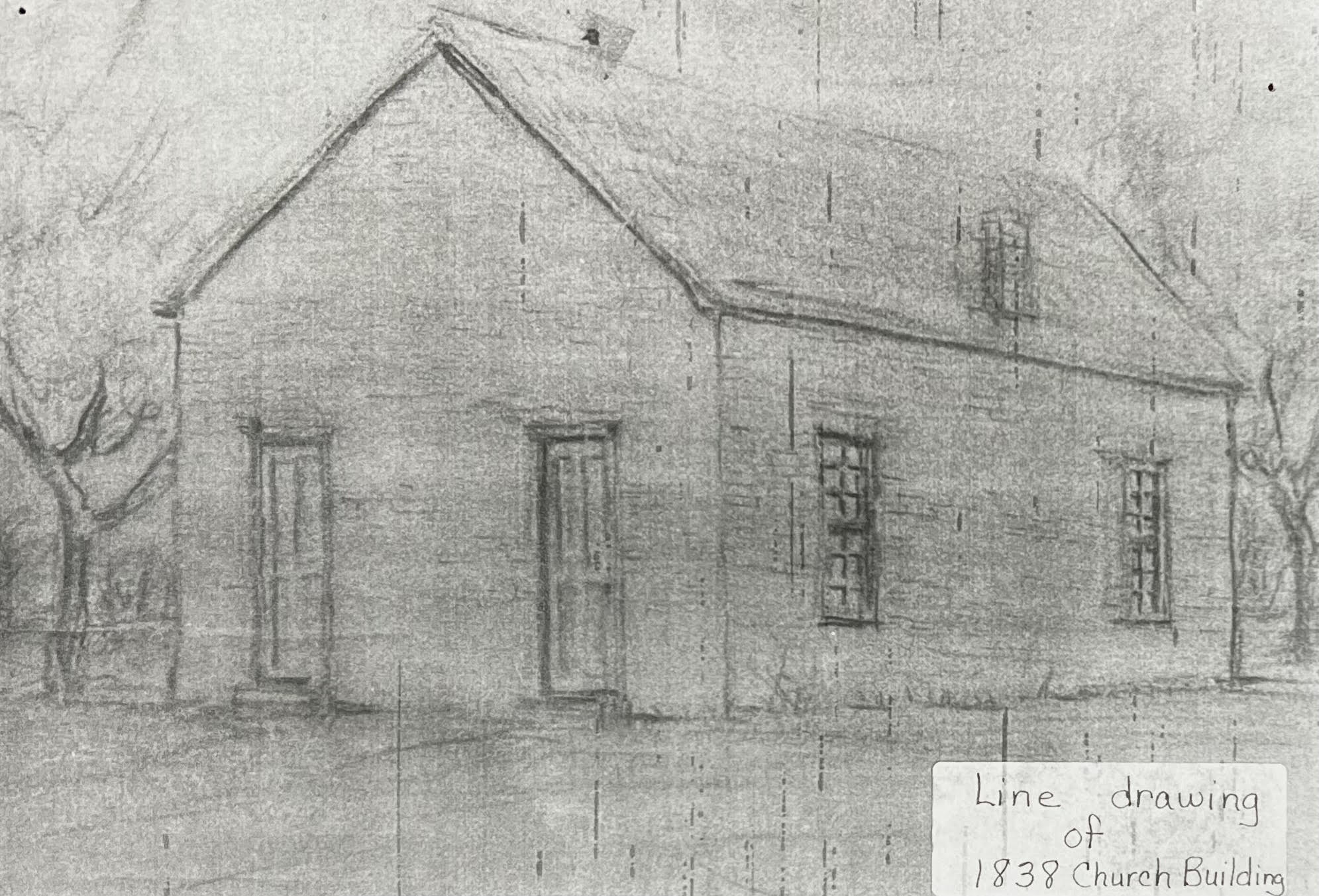
Our Historical Timeline:
In 1834 Independence was a rugged frontier town of 300 inhabitants. Some of those believed in Methodism and began to meet in their homes.
1835 – Rev. Wm. Hulse was a preaching circuit rider between Lexington and Independence. A “Society of Methodists” was organized with 10 charter members: Henry Ruby, Rebecca Ruby, John McMurray, Jane McMurray, Smallwood Noland, Nancy Noland, Jesse Noland, Angeline Noland, Reuben Wallace and Mary Wallace.
1838 – Lots 34 and 35 at the corner of Rock Street (now Maple Ave.) were purchased from Samuel C. Owens for $150. A church building was completed at a cost of $1,000. It was a small one story brick building, 40 x 60 feet. It was heated by two wood stoves, one on each side.
1844 - Slavery caused a split in the church and it was divided at the general conference. This congregation voted to join the Southern branch and become the Maple Avenue Methodist Episcopal Church South.
1845-46 – This church became a regular station with one pastor, the Rev. John R. Bennett.
1948 – Sunday School was established.
1853 – The population of Independence was increasing. The church had grown. A new parsonage was built on the existing property just north of the church.
1857-1859 – A new church was built on the same site of the old. This was a two-story brick building (using the Randall family bricks) measuring 50 x 70 feet and was completed at a cost of $15,000. It was of Gothic architecture with beautiful stained-glass windows and a tall spire which held a sweet deep-toned bell that could be heard for miles. At this time the church has 170 white members in full connection, 12 on probation and 48 Black members with 4 on probation.
1861-62 – Southern-leaning Rev. W. M Leftwich was the senior minister here and the United States was on the brink of civil war. Several times he was put under military arrest and informed of plots to shoot or hang him. He had many friends, some of whom traveled in the night to warn him of threats by Cleveland and Kansas outlaws. Union officers counseled him to leave, and as he was preparing to do so, the Battle of Independence was fought and Confederate forces took the city. After the surrender, Leftwich spent the rest of the day in caring for the wounded and dying. That night, he loaded his family and belongings in a coverless two-horse wagon and headed to St. Louis, via Lexington. A scant two hours passed when the city was re-entered by the northern forces. The church and parsonage were searched by those set on finding and hanging him, but to no avail. Rev. Leftwich had made his escape.
1862-63 – Church was taken over by the troops and being used by military chaplains as a hospital.
1864 – The keys to the church were taken from the custodian by the troops. During this time church members met in the Presbyterian church. Many conflicting stories have been written about the incident involving the “sit-in” by the women of the church. Rev. Leftwich’s writings in a book called Methodism in Missouri, by W.H. Lewis, pastor of the Methodist Episcopal Church South in Independence in 1850, include his perspective of “The Day the Ladies Took Over the Church”:
“The ladies, believing they had the first and best right to the property, and chagrined at the refusal, entered the church one day with their knitting and sewing, to the number of 30, and conducted themselves in a peaceful, quiet, and orderly way, to spend the day in the house of worship built and paid for by their fathers, husbands, and brothers. The Northern Methodist Preacher…hastened to a civil magistrate and made affidavit that these ladies were ‘disturbing the peace’ and had them arrested and dragged before the civil officer for trial. Nothing was found in them worthy of prison or death, and binding them over to keep the peace, they were released.”
1865 – M.M. Pugh and 25 parishioners petitioned the military commander and President Andrew Johnson for possession of the property.
1866 – The dispute was settled and the property was awarded back to the southern church.
1867 – Members regained use of the church and began a new Sunday School program.
1876 – A fire broke out in the parsonage and two of Rev. McFarland’s daughters perished.
1879– Independence Auxiliary of the Women’s Missionary Society organized and raised $78 for the cause of mission.
1918 – During WWI the flu epidemic closed the church for 8 weeks.
1920s – The wooden was steeple destroyed by violent windstorm. Due to structural damage, it was taken down and not replaced. Church membership had grown to 550. The Ever Ready Missionary group was organized for younger women in the congregation.
1929 – A house at 1001 S. Main was purchased for a parsonage. Services were held in the Memorial Building while an addition was built on the north of the church for Sunday School rooms, at a cost of $56,000. At this time, the main building was veneered with new brick, a new roof was added, new plaster was applied to the inside walls and new stained glass windows were installed. The altar and organ loft were also rearranged.
1930s – The church was not exempt from the financial woes caused by the Depression. The church ladies served lunch to the townspeople in downtown Independence at a cost of 25 cents per meal. They also made and sold quilts to help pay expenses.
1935 – The Centennial was celebrated with a homecoming and church pageant.
1939 – The General Conference was held in Kansas City. During this conference the northern and southern branches of the Methodist church came back together. The Independence church’s name was changed from Maple Avenue Methodist Church South to First Methodist Church of Independence. The women of the church were all united in the Women’s Society of Christian Service to “quicken the spiritual life of all Methodist women; to deepen the prayer life, and to increase the sense of responsibility for personal service and giving.”
1939—Our church was experiencing another period of growth. The Maritus Class (‘martius’ is a French word meaning being married) was formed to serve the young married people for Bible study and worship, sharing their ideas and thoughts with others of the same age who had similar interests. The first money making project for the class was a booth at Santa-Cali-Gon in 1939. Proceeds were used to finish and furnish their first classroom. The proceeds from their many fundraising efforts supported St. Paul School of Theology, Inner-City Parish, Della C. Lamb, Spofford Home, Wesley Foundation, Headstart, Mission Fund, church building fund, sanctuary remodel fund, robes for acolytes, MYF trips to Silver Dollar City, vacation Bible school, and purchased the complete set of the Dobson Film Series for the library.
1941—On December 20, a group of 48 men met for the purpose of discussing plans for the organization of a Men’s Club committed to faith, fun, food and fellowship.
1943– It was decided the Men’s Club would affiliate with the Methodist Men (General Board of Lay Activities) with 48 charter members. The church booth serving food at Santa-Cali-Gon Days started as a Methodist Men’s project but later became an all-church fundraiser.
1951-60 – Pastor Ross Fulton, Sr.
1957 – The Kepley Funeral Home was purchased, which became the Wesley Center.
1960-61 – There was a complete remodeling of the sanctuary which included a center aisle. While under construction the services were held at the Granada Theater across Maple Avenue. A German sculptor named Kurt Zacharias who lived in Sugar Creek carved the statue of Christ still seen at the back of the church. While digging for the supports for the new arches, a partially caved in underground tunnel was discovered. Some believed it was part of the Underground Railroad; some believed it was for the minister to hide from the Northern troops.
1964 – A new parsonage at today’s site of 4321 Cambridge was purchased.
1968 – The Methodist Church and the Evangelical United Brethren Church came together to become the United Methodist Church. Our church became the First United Methodist Church in Independence.
1968-71 – Pastor Walter Niles
1972-74 – Pastor Charles Holt
1975 – The Wesley Center was torn down and an educational wing was built at the north end of the church, costing $200,000, which included an elevator and a new forced air gas furnace.
1975-82 – Pastor William Crawford
1980s–1990s—Members from the Sunday school classes formed teams and participated in city sport leagues for volleyball, softball and basketball.
1980–The White Oak Methodist Church merged with the First United Methodist Church of Independence. There were 15 members at the time. Rev. J.J. Johnson joined our staff.
1983-84 – Pastor David Kerr
1984 – The church purchased the Whetstone Professional building on the corner of Truman and Spring along with the apartment house on Truman Road for $170,000. This made church ownership include the entire block with the exception of the Memorial Building. The church office was moved to the old nursery, so the secretary could greet people before they arrived to the pastor. The room between the office and elevator was turned into a room for meetings and counseling by the pastor. It is now being used as the Finance Office. It also made it possible to create the new Library and Gathering Area.
1985-90 – Pastor Harold Johnson
1985 – The Sesquicentennial was celebrated with a dinner and pageant. Parent’s Day Out program began, which is the predecessor to the Starshine program of today.
1990s- During the mid-1990’s the church became very involved in outreach ministry. We purchased a full-size passenger van and the ‘Van Ministry’ began. People were picked up on Sundays, and the vehicle was also used for field trips. Three worship services were offered, two were traditional and the other informal with contemporary music. There was a group who trained and learned about The Stephen Ministry program and then provided caring support for members experiencing challenging times. We had a May Basket Project for shut-ins, a Hospital Visitation Team, and a Summer Day Camp that served 100 children in our community. Two new Sunday school classes were started, the Seekers adult class and a Singles Group. A permanent endowment fund was established to ensure long-term financial support. Congregation members also started attending Camino weekends to grow their faith.
1990 – The apartment building and Vardeman house, which had been given to the church, was torn down and parking lot expanded.
1991 – Chimemaster chimes were added.
1991-94 – Pastor Marion Eugene Barnes.
1994 – Fellowship Hall and the kitchen were remodeled.
1995-99 – Pastor Gene Cole
2000-2003 – Pastor James Smith
2003-2009 – Pastor Alan Pruitt
2003 – The professional building was demolished, and the existing parking area was built on our property by the City of Independence. An agreement was signed with the City, which gave the Memorial Building’s patrons use of our parking lot, in exchange for the maintenance of the lot being done by the City.
2004 – New signs were added on Truman, Pleasant and Spring streets. The Story and Clary Baby Grand Piano was purchased.
2005 – 170th anniversary celebration of the church. A new Allen Renaissance Quantum Digital Organ was installed in the Sanctuary. This was the first of its kind in a 5-state area. A new 32’ high steeple was added to the bell tower and the altar area of the sanctuary was refurbished.
2006 – The church’s exterior was tuckpointed and new windows were added to the Education wing. The downstairs women’s bathroom was remodeled and the upstairs women’s bathroom became handicapped accessible.
2007 – New multimedia system was installed.
2010-2016 – Pastor Mitch Jarvis
2010 – 175th anniversary celebration. The wall behind the altar with the hanging cross was replaced by cardinal red colored fabric. The wall behind the fabric had notes added by congregation members about their lives in the church and what the church meant to them.
2016-23 – Pastor J. C. Harp
2018 – Worship services began streaming online.
2020—The COVID pandemic closed the church, and the congregation started parking lot church shortly after shutdown. No one met in the building for close to a year. The Journey Sunday school class met in Zoom for about 6 months, and Leadership Team met on Zoom.
2022 - United Methodist Women were renamed to United Women in Faith.
2023-2025 – Pastor Lydia Istomina
2025 – Pastor Angie Colina McNeil
2025 – New boiler was installed.
Come and be a part of our story at Independence First United Methodist Church – where history, tradition, and the Gospel come alive.

